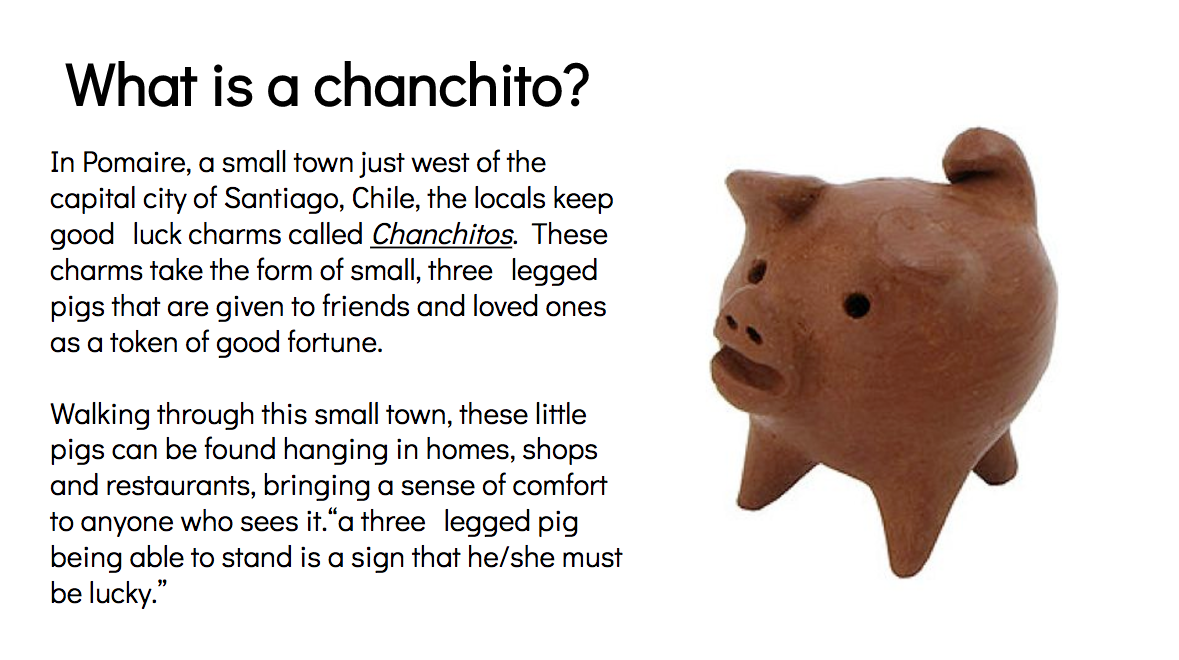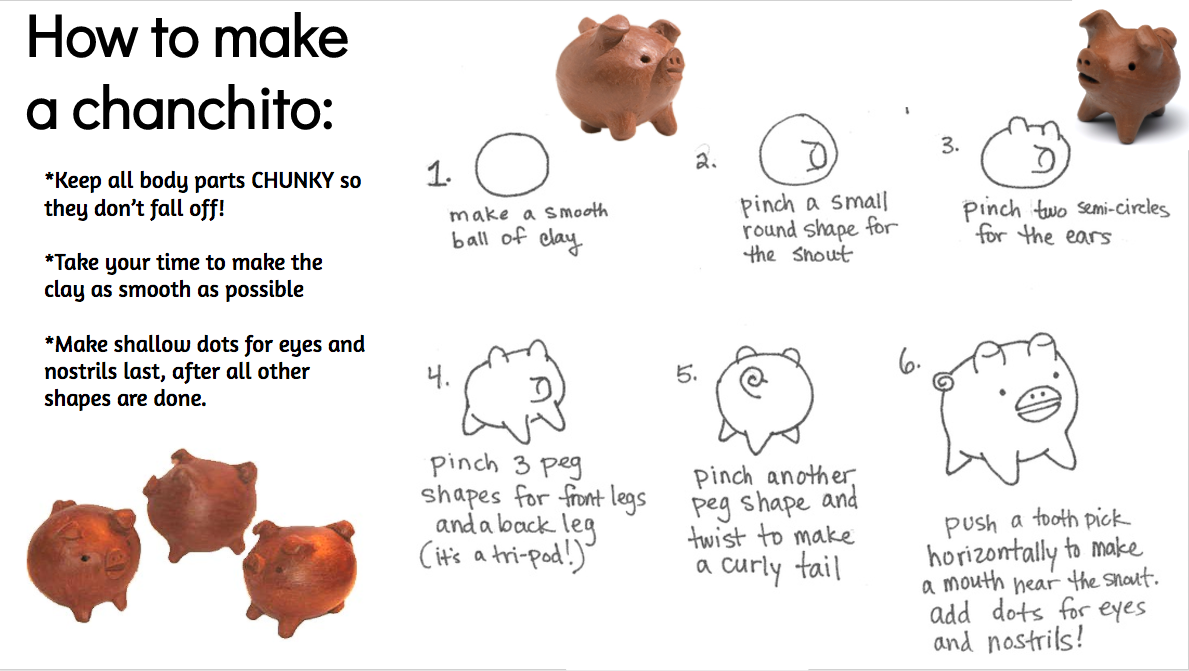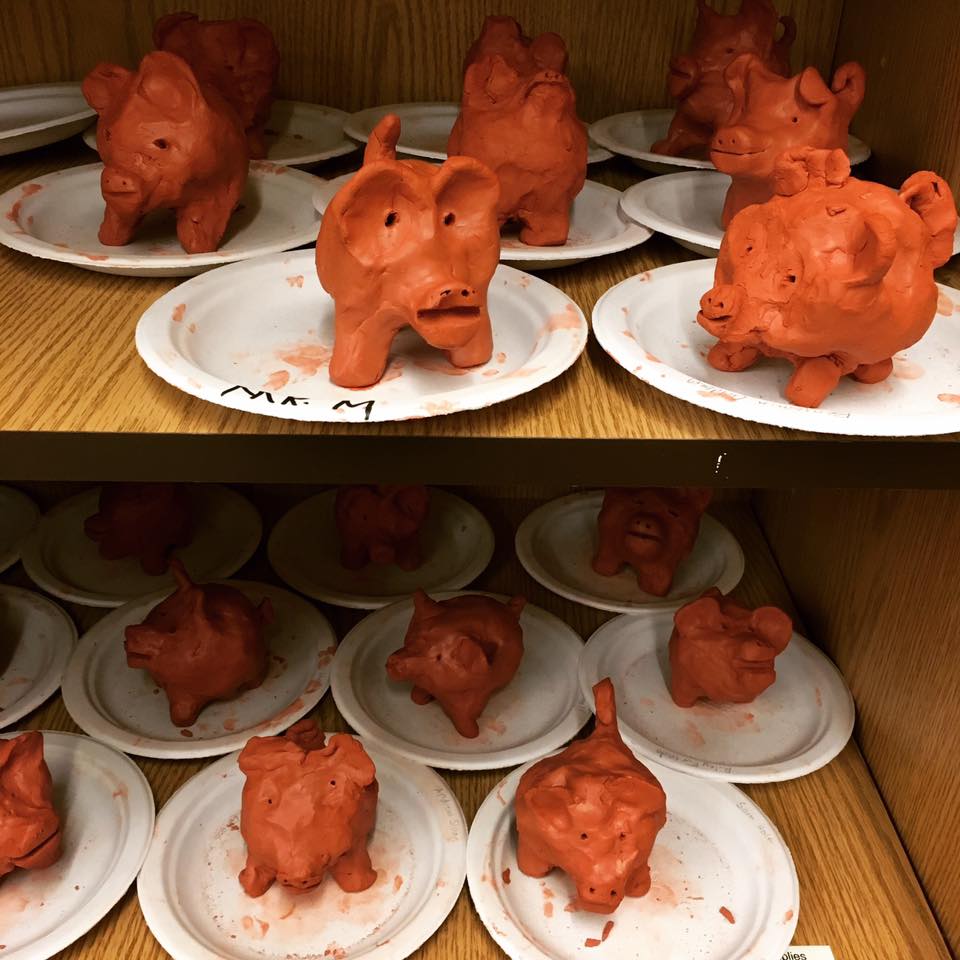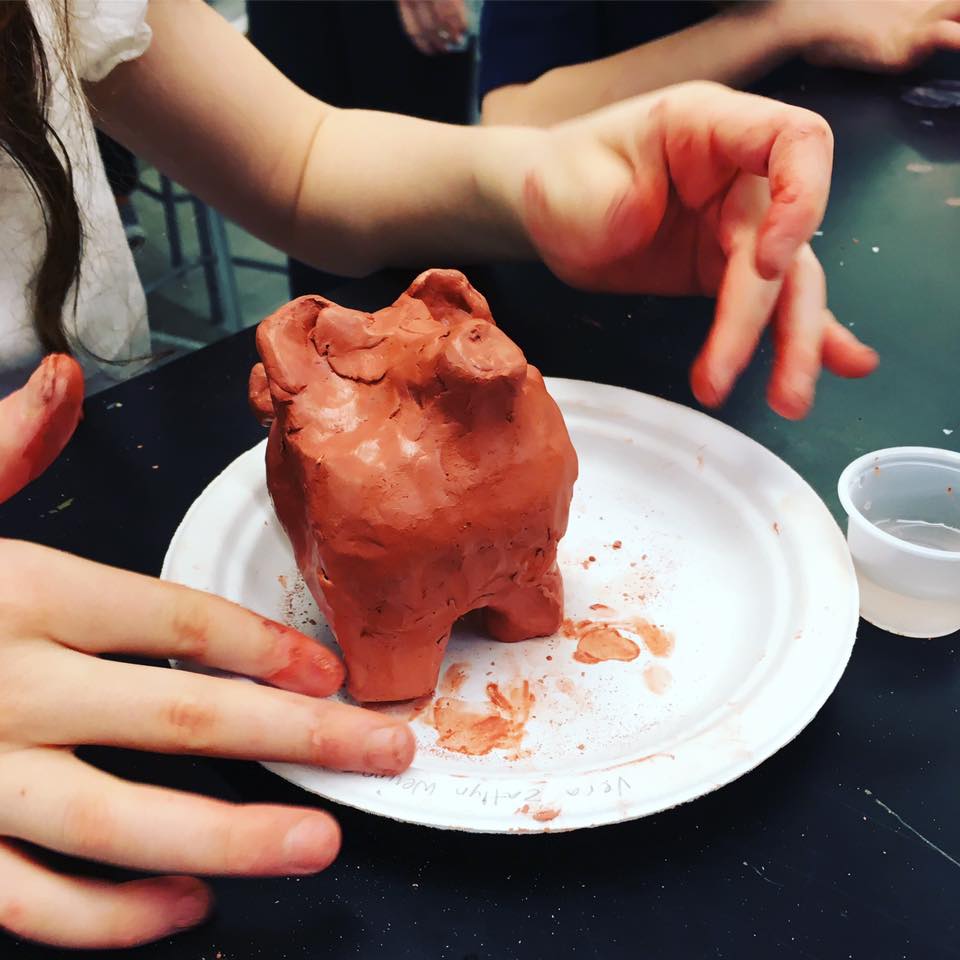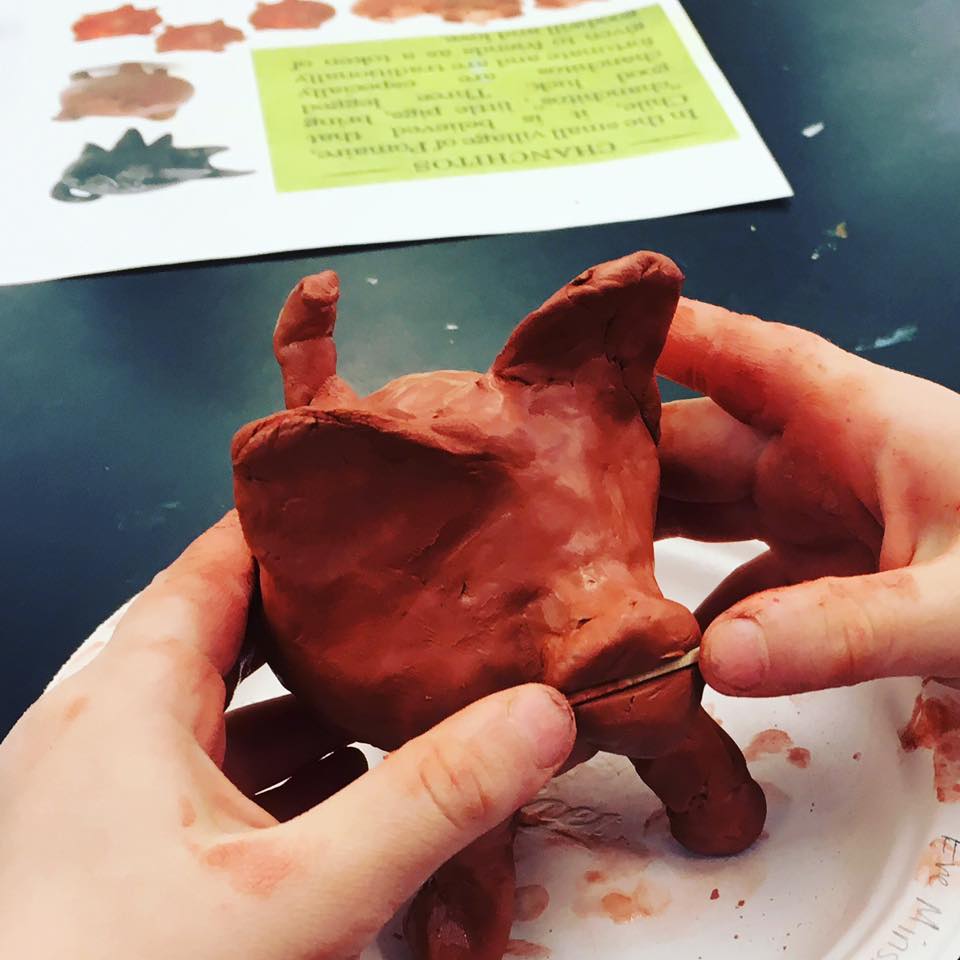Chanchitos - Three-legged Lucky Pigs from Chile
AUTHOR: Emily Valenza
LESSON TITLE: Chanchito Sculptures
GRADE LEVEL: 1 NUMBER OF STUDENTS: 15
LESSON RATIONALE
In this lesson, students will explore the traditional sculpture and pottery of Pomaire, Chile.
Goals and Standards:
Grade K-4 Visual Arts Standard 1: Understanding and applying media, techniques, and processes.
Grade K-4 Visual Arts Standard 4: Understanding the visual arts in relation to history and cultures.
GOALS & LEARNER OUTCOMES
What will students learn through this lesson? What specific knowledge, skills, and/or attitudes should students gain or develop through this lesson?
The students will learn about a traditional style of pottery and sculpture from Pomaire, Chile that uses careful modeling and burnishing techniques.
Each student will learn to pull forms from smooth balls of clay to create chanchitos, three-legged pigs that symbolize friendship and good luck.
Students will learn about the tripod base - a form that has existed since the Neolithic period and is amazingly stable, even on uneven surfaces
The students will practice creating a story inspired by the personality of their finished chanchito.
MATERIALS NEEDED FOR LESSON
TEACHER MATERIALS
Examples of traditional chanchitos
Video of artisans from Chile
Sample project completed in stages for demonstration
Reference materials for Chilean culture
STUDENT MATERIALS
Terracotta clay
Water cups
toothpicks
Plates for storage
MATERIALS FOR SPECIAL NEEDS STUDENTS
Gloves for tactile defensive students
Thicker oil pastels for students with grip difficulties
LESSON PROCEDURES
STARTING THE LESSON
Students will view a presentation on the culture of Pomaire, Chile, watch a short video on the chanchito process, and then break the process down step-by-step as a group.
BEHAVIORAL EXPECTATIONS
Students will observe the chanchito process and consider how they might translate that aesthetic into a their own sculpture. Students will support each other at tables as they go through the steps outlined in the demonstration.
ORGANIZER
Students will use steps illustrated on the board, and reproduced on tables, to guide their process.
LESSON SEQUENCE
- Students turn their portion of clay into a smooth ball by patting in a rotational manner.
- Students will form each part of the chanchito using pulling and pinching modeling methods.
- Students will smooth lumps in clay with their fingers.
- Students will smooth their chanchito using their finger and a small amount of water.
- Students will add a face to their chanchito using a toothpick.
- Students will write and illustrate a story about their chanchito.
- Let work completely dry and display!
CLOSURE OF THE LESSON
Students will view the finished work created by their class, then compare and contrast what they see with the traditional chanchitos presented at the beginning of the lesson.
TRANSITION TO NEXT LESSON
Students will compare the pottery and sculptures from Chile with pottery and sculptures from our next unit in China.
ASSESSMENT OF STUDENT LEARNING
The students will be able to turn a lump of clay into a smooth ball.
The students will be able to form a stable tripod form with the legs of their chanchito.
The students will be able to speak at length about Chile and it's pottery traditions.
The students will demonstrate comfort with working in clay.
REFERENCES
